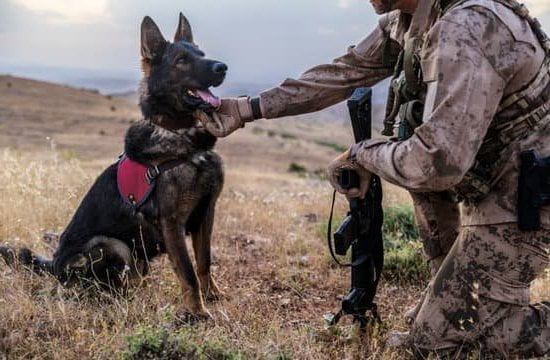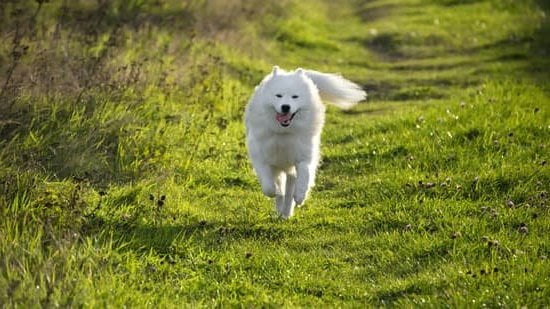House training is a crucial aspect of raising a dog, contributing to a harmonious relationship between pet and owner. A well-house trained dog not only ensures a clean and comfortable living environment but also promotes the overall well-being and happiness of both parties involved. This article aims to shed light on the age at which dogs are usually house trained, providing valuable information and guidance for dog owners in their training journey.
Having a dog that is properly house trained has numerous benefits for both the pet and the owner. Firstly, it creates a sense of order and cleanliness within the home, eliminating the stress and inconvenience caused by accidents or soiled furniture. Additionally, it promotes good behavior and reduces behavioral issues such as chewing or marking territory. By instilling discipline and routine through house training, dogs become more obedient and easier to manage.
The impact of proper house training extends beyond the physical aspects. It greatly enhances the bond between dogs and their owners, fostering trust, communication, and understanding. Dogs that are reliably house trained are happier and more relaxed, leading to improved mental health for both themselves and their human companions. In turn, owners can enjoy peace of mind knowing that their fur babies are contented members of the family.
In this comprehensive guide, we will delve into various aspects of house training for dogs. From defining what exactly house training entails to exploring factors influencing the age at which dogs can be successfully trained, we aim to provide useful insights that will help every pet owner establish an effective training regime. So let’s embark on this journey together, creating a loving home environment where our beloved four-legged friends thrive in every way possible.
Defining House Training and Its Process
To establish a solid foundation for house training dogs, it is crucial to understand what exactly house training entails and the basic principles behind it. House training, also known as potty training or toilet training, refers to the process of teaching a dog to eliminate their waste in an appropriate location, such as outside or on designated pee pads.
This essential aspect of pet ownership is not only aimed at maintaining cleanliness and hygiene within the home but also contributing to a harmonious relationship between dogs and their owners.
The process of house training involves several key steps that are vital for success. Consistency is paramount in establishing clear expectations and routines for your dog. By providing timely and consistent reinforcement for desirable behaviors, such as eliminating waste outside or on the designated spot, you can effectively communicate your expectations to your furry friend. Positive reinforcement techniques, such as praise, treats, or toys, should be utilized to encourage desired behaviors during the house training process.
Additionally, establishing a routine can greatly facilitate the house training process for both you and your dog. Dogs thrive on predictability and structure; therefore, maintaining a regular schedule for feeding times, potty breaks, and exercise sessions can help them develop good habits more quickly. Creating a specific schedule will help ensure that your dog has ample opportunities to relieve themselves outside without accidents occurring indoors.
Factors Influencing the Age Dogs Can Be House Trained
When it comes to house training dogs, there is no one-size-fits-all approach. The age at which dogs can be successfully house trained can vary depending on several factors. Understanding these factors and their impact on the training process can help dog owners set realistic expectations and tailor their approach accordingly.
Breed Differences, Size, and Temperament
One of the main factors that influence the age at which dogs can be house trained is breed differences. Some dog breeds are known for being quicker to pick up on house training cues and have better bladder control than others. For example, smaller breeds such as Chihuahuas or Yorkshire Terriers tend to have smaller bladders and may need more frequent potty breaks compared to larger breeds like German Shepherds or Labradors.
In addition to breed differences, a dog’s size can also play a role in their ability to be effectively house trained. Smaller dogs generally have less capacity in their bladder and may need more frequent opportunities to eliminate outside. On the other hand, larger dogs have the physical ability to hold their bladder for longer periods of time.
Furthermore, a dog’s individual temperament can affect their readiness for house training. Some dogs are naturally more compliant and eager to please their owners, making them more receptive to learning and following commands related to house training. However, other dogs may be more stubborn or independent, requiring additional patience and consistent reinforcement.
Adopted/Rescue Dogs versus Puppies from a Breeder
Another factor influencing the age at which dogs can be house trained is whether they are adopted/rescue dogs or puppies from a breeder. Adopted or rescue dogs may come with unknown backgrounds or previous experiences that could impact their ability to adjust quickly to new routines or learn appropriate elimination habits.
For example, an adult dog that has previously been allowed to eliminate indoors may take longer to understand and adapt to the notion of going outside. On the other hand, puppies from reputable breeders or responsible owners who have started early socialization and house training tend to have a head start in the house training process.
It is important for dog owners to consider these factors when embarking on the journey of house training their pets. By understanding that every dog is unique and adjusting their approach accordingly, owners can set themselves and their furry companions up for success in creating a happy and harmonious home environment.
Typical House Training Timeline for Puppies
For new puppy owners, understanding the typical house training timeline is essential for setting realistic expectations and successfully training their furry friend. While every puppy is different, there are general guidelines that can help guide the process. It’s important to remember that house training takes time, patience, and consistency.
The general consensus among experts is that puppies can begin house training as early as 8 weeks old. At this age, they have enough physical and cognitive development to start learning basic behaviors. However, it’s important to note that most puppies will not have complete control over their bladder and bowel movements until they are around 16 weeks old.
During the early stages of house training, a puppy should be taken outside frequently – about every two hours – to eliminate. Additionally, they should be taken outside after eating or drinking, after waking up from a nap, and after periods of play or excitement. It’s crucial to reward the puppy with praise and treats when they eliminate in the appropriate spot outside. This positive reinforcement helps them associate going outside with positive experiences.
As the puppy grows older and gains more control over their bladder and bowel movements, the frequency of potty breaks can gradually be reduced. By around 4-6 months old, most puppies should be able to hold their bladder for four to six hours during the day and through the night.
It’s worth noting that individual puppies may progress at different rates in their house training journey due to various factors such as breed differences, size, temperament, and previous experiences before coming into your home. Additionally, adopted or rescue dogs may require extra patience and time for successful house training compared to puppies from reputable breeders who may have started some form of house training before being adopted.
By understanding this general timeline and tailoring it to meet the specific needs of a puppy, dog owners can make informed decisions regarding their approach to house training. Remember, consistency is key in reinforcing positive behaviors and helping a puppy become a well-house trained companion.
Recognizing Signs of Readiness for House Training
House training is a crucial aspect of owning a dog, and recognizing when your furry friend is ready for this process is essential. By paying attention to their behavior and physical cues, you can determine when it’s the right time to begin house training. In this section, we will explore the signs that indicate a puppy or adult dog is prepared for house training.
Behavioral Cues
One of the most common behavioral cues that signal readiness for house training is when a dog starts sniffing or circling before elimination. This behavior indicates that they are becoming aware of their bodily functions and are developing the instinct to find an appropriate spot for relieving themselves. Additionally, some dogs may scratch at the door or show intense focus on a specific area as an indication that they need to go outside.
It’s important to note that puppies have smaller bladders and shorter control over their bowel movements, so they may need more frequent potty breaks compared to adult dogs. However, both puppies and adult dogs will exhibit similar behavioral cues when they are ready for house training.
Physical Signs
Alongside behavioral cues, there are also certain physical signs you can look out for to determine if your dog is ready for house training. For example, if you notice that your dog suddenly becomes more restless or agitated without any apparent reason, it could be an indication that they need to eliminate.
Additionally, paying attention to their regular schedule can help you identify patterns in their bathroom habits. If you notice consistent times throughout the day when they usually relieve themselves, it can be useful in establishing a routine during the house training process.
By understanding these behavioral and physical signs of readiness, you can start the house training process at the most opportune time. Remember that consistency and positive reinforcement are key elements in successful house training, so taking advantage of these signals will make the process smoother and more effective.
House Training Strategies and Techniques
When it comes to house training dogs, there are several effective strategies and techniques that can help ensure success. By implementing these methods consistently, pet owners can establish good habits and set their dogs up for a lifetime of successful elimination behaviors.
One key strategy for house training is crate training. This involves using a crate or kennel as a safe and comfortable space for the dog when they cannot be directly supervised.
Dogs have a natural instinct to keep their den clean, so by confining them to a crate, it encourages them to hold their bladder until they are taken outside. It’s important to size the crate correctly, as it should provide enough room for the dog to stand, turn around, and lie down comfortably.
Positive reinforcement is also an essential element in successful house training. Rewarding your dog with praise, treats, or playtime immediately after they eliminate in the appropriate spot reinforces this desired behavior. It is crucial to pair the reward with the action as soon as possible so that the dog associates going in the correct spot with positive outcomes. Consistency is key when using positive reinforcement; make sure everyone in the household follows the same rules and rewards the dog consistently.
Establishing a consistent schedule is another critical aspect of house training. Dogs thrive on routine, so having set times for meals, potty breaks, exercise, playtime and sleep will help them understand what is expected of them. Taking your dog outside regularly – upon waking up, after meals or water intake, after playtime or exercise – will help prevent accidents indoors.
In addition to these strategies, frequent potty breaks are essential during the house training process. Young puppies may need to go outside every hour while adult dogs may need fewer breaks but still require regular opportunities for elimination throughout the day. By providing frequent potty breaks in specific areas outside where you want your dog to go, you increase their chances of success while decreasing accidents indoors.
By implementing these house training strategies and techniques consistently, pet owners can create a positive and effective approach to potty training their dogs. Remember that each dog is unique, and the process may take time and patience, but with dedication and consistency, long-term success can be achieved.
Challenges and Pitfalls of House Training
House training a dog can be a challenging process, and it’s important for dog owners to be aware of the potential challenges and pitfalls they may encounter. By understanding these obstacles and being prepared, owners can navigate through them more effectively and ensure a successful house training experience.
One common challenge that dog owners may face during house training is accidents. It’s important to remember that accidents are part of the learning process and should not be seen as failures. Dogs may have occasional accidents, especially in the early stages of training or if there are changes in their routine or environment.
When accidents happen, it’s crucial to avoid punishment or scolding, as this can create fear or confusion in dogs and hinder their progress. Instead, focus on reinforcing positive behaviors by rewarding your dog for going potty in the appropriate spot.
Another challenge is establishing a consistent routine. Dogs thrive on routines, and having a consistent schedule for taking them outside to eliminate helps reinforce good habits. However, busy lifestyles or unpredictable circumstances can make it difficult for owners to maintain a strict routine. In these situations, it’s important to adapt and be flexible while still providing regular opportunities for your dog to go potty outside.
One pitfall to watch out for is unintentionally reinforcing undesirable behavior. Dogs are sensitive to reinforcement, whether it’s positive or negative.
If a dog receives attention or rewards when they exhibit unwanted behaviors such as barking or whining at the door instead of going outside, they may learn that these behaviors are effective ways to get what they want. To avoid this pitfall, make sure you consistently reward your dog for exhibiting desired behavior by going outside when they need to eliminate.
| Challenge | Pitfall |
|---|---|
| Accidents during training | Avoid punitive measures |
| Establishing a consistent routine | Adapt and be flexible while still providing regular opportunities |
| Unintentionally reinforcing undesirable behavior | Consistently reward desired behaviors, not unwanted ones |
By being aware of these challenges and pitfalls, dog owners can approach the house training process with patience, understanding, and the necessary tools to overcome obstacles. With consistent training, positive reinforcement, and a supportive approach, dog owners can successfully house train their pets and enjoy the benefits of a well-behaved and happy canine companion.
Myths Debunked
House training is an essential part of raising a happy and well-behaved dog, but unfortunately, there are many myths and misconceptions surrounding this process. In this section, we will address some of the most common misconceptions about house training and provide evidence-based information to challenge and correct these myths.
One prevalent myth is that dogs can only be house trained at a certain age. While it is generally easier to train puppies compared to adult dogs, house training can be successfully achieved at any age with consistency and patience. Older dogs may require more time to adjust to new routines, but they are still capable of learning and adapting.
Another myth is that certain breeds are easier or harder to house train. While some breeds may have specific traits or temperaments that influence their trainability, every individual dog is unique. Factors such as size, temperament, and previous experiences play a more significant role in determining how quickly a dog can be house trained. It’s important not to generalize based on breed alone when it comes to house training.
| Common Misconception | Debunked Fact |
|---|---|
| Dogs can only be house trained at a certain age. | House training can be achieved at any age with consistency and patience. |
| Certain breeds are easier or harder to house train. | While breed traits may influence trainability, individual factors such as size and temperament have a greater impact. |
Lastly, there is a misconception that punishment should be used when accidents occur during the house training process. Punishment can create fear and anxiety in dogs, leading to more difficulty in the training process. Positive reinforcement, such as rewards and praise for desired behavior, is a much more effective and humane way to encourage dogs to eliminate outside.
By debunking these common myths about house training, we hope to provide dog owners with accurate information that will help them navigate the training process successfully. Remember, consistency, patience, and positive reinforcement are key elements for achieving house training success regardless of a dog’s age or breed.
Conclusion
In conclusion, the success of a well-house trained dog is something to be celebrated. House training plays a crucial role in fostering a happy and healthy coexistence between dogs and their owners. It not only improves the overall quality of life for both the pet and the owner but also strengthens the bond between them. By adhering to the principles of consistency, positive reinforcement, and routine establishment, dog owners can achieve successful house training results.
Starting the training process early is key. By beginning house training when puppies are at an appropriate age, dog owners can establish good habits from the start. However, it’s important to remember that each individual puppy has its own unique needs and pace of development. Balancing a realistic timeline with patience and understanding is crucial for achieving long-term success.
While challenges and setbacks may arise during the house training process, it’s essential for owners to remain patient and persistent. Accidents happen, especially in the early stages of training when dogs are still learning. It’s important not to become discouraged or give up on the training efforts. Instead, focus on effective troubleshooting techniques to overcome obstacles.
Lastly, having a well-behaved and house trained dog brings immense joy and satisfaction to both owners and their furry companions. A dog that understands its boundaries within the home environment is more likely to experience freedom indoors as well as in other aspects of its life.
By celebrating the success of a well-trained dog, we acknowledge the time and effort invested in building a strong relationship based on trust, respect, and effective communication. So let us begin this journey early, be patient along the way, and revel in the delight of sharing our lives with a happy and well-behaved canine companion.
Frequently Asked Questions
At what age are dogs easiest to potty train?
Dogs are usually easiest to potty train between the ages of 8 and 16 weeks old. During this time, puppies have a greater ability to learn and absorb new information.
Their bladder control is still developing, but they can start to understand the concept of eliminating in an appropriate place if they are consistently provided with proper training and reinforcement. Consistency, patience, positive reinforcement, and a regular routine are key factors in successfully potty training a dog at this age.
What dog breeds are hardest to potty train?
While all dogs can be potty trained with consistent effort and proper training techniques, some breeds are generally considered more challenging than others when it comes to housebreaking. Terrier breeds like Jack Russell Terriers or Dachshunds are often mentioned as being harder to potty train due to their independent nature and potential stubbornness.
Small toy breeds or some of the larger breeds such as Great Danes may also present additional challenges as they may have smaller bladders or more difficulty holding their urine for longer periods.
Can a 2 year old dog be house trained?
Yes, a 2-year-old dog can still be house trained even if they haven’t been previously taught appropriate elimination habits. It’s important to remember that while older dogs might take longer to learn or adjust their behavior compared to young puppies, it is definitely possible with the right approach and consistency. Patience is key when working with an adult dog that hasn’t been properly house trained before.
Establishing a strict routine for feeding, walks, and bathroom breaks will help create predictable opportunities for the dog to eliminate outside. Using positive reinforcement such as treats or praise when the dog eliminates in the desired area will also reinforce the desired behavior over time. Regular exercise and mental stimulation can also help prevent accidents inside the house by reducing anxiety or boredom-related issues.

Welcome to the blog! I am a professional dog trainer and have been working with dogs for many years. In this blog, I will be discussing various topics related to dog training, including tips, tricks, and advice. I hope you find this information helpful and informative. Thanks for reading!





